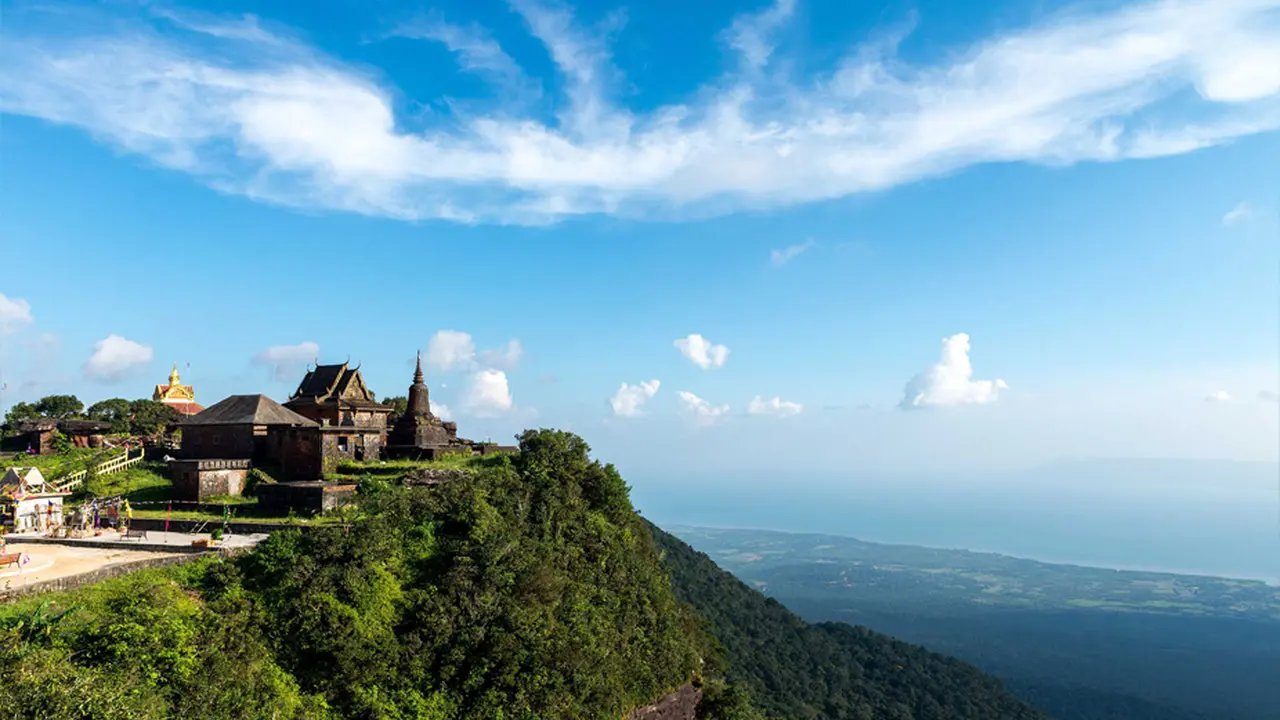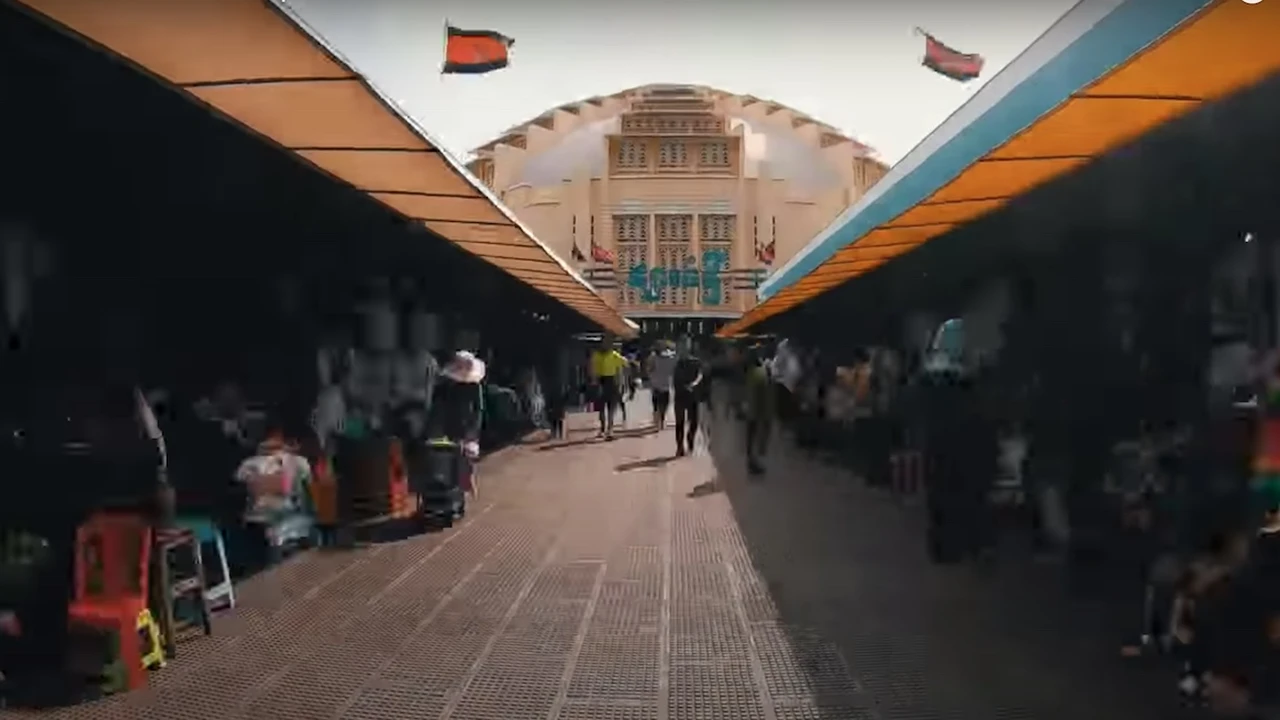Angkor National Museum: A Must-Visit for US Travelers Before Angkor Wat

Why US Travelers Should Prioritize the Angkor National Museum Siem Reap History and Culture
Alright, folks, planning that epic trip to Angkor Wat? Awesome! But before you get all Indiana Jones on those ancient temples, let's talk about a seriously underrated gem: the Angkor National Museum. Trust me, especially if you're coming from the US, hitting this museum first is gonna make your whole Angkor experience ten times richer. Why? Because context is king (or, you know, king-god in this case).
Think about it. You're about to wander through sprawling temple complexes, surrounded by intricate carvings and centuries of history. Without a solid foundation, it's easy to get templed-out and start seeing just...rocks. The Angkor National Museum provides that foundation. It gives you the backstory, the context, the "who's who" of the Khmer Empire. It's like reading the Cliff's Notes before the final exam, except way more engaging.
For US travelers, especially, the museum offers a smoother entry into a culture vastly different from our own. It bridges the gap, helping you appreciate the artistry, the religious significance, and the sheer scale of what you're about to witness at Angkor Wat and the surrounding temples. So, ditch the jet lag nap and head straight to the museum. You won't regret it.
Unveiling the Treasures Angkor National Museum Exhibits and Artifacts
Okay, so what's actually in this museum that makes it so vital? It's not just a bunch of dusty relics behind glass (although there are some relics, and they're pretty cool). The Angkor National Museum is a meticulously curated collection of artifacts spanning centuries of Khmer history. We're talking statues of gods and kings, intricate carvings, ancient jewelry, and everyday objects that offer a glimpse into the lives of the people who built and lived in Angkor.
The museum is divided into galleries, each focusing on a different aspect of Khmer civilization: religion, royalty, warfare, art, and architecture. The exhibits are well-organized and clearly labeled (in English!), making it easy to follow the narrative. You'll learn about the rise and fall of the Khmer Empire, the religious beliefs that shaped its art and architecture, and the technological innovations that allowed them to build such magnificent structures.
One of the highlights is the Hall of a Thousand Buddhas, a stunning collection of Buddha images from different periods and styles. It's a truly awe-inspiring sight and a great introduction to the Buddhist influences that permeate Khmer culture. Another must-see is the gallery dedicated to Vishnu, one of the principal deities in Hinduism, which played a significant role in the early Khmer Empire.
Planning Your Visit Angkor National Museum Location Tickets and Opening Hours
Alright, practical stuff. The Angkor National Museum is located in Siem Reap, just a short tuk-tuk ride from the city center and the Angkor Wat complex. It's easily accessible and well-signposted. You can't miss it.
Tickets can be purchased at the museum entrance. Expect to pay around $12 USD per person. While you can buy them online in advance through some third-party sites, it's usually just as easy to get them at the door. The museum is open daily from 8:30 am to 6:00 pm, with the last admission at 5:30 pm. Give yourself at least 2-3 hours to explore the museum properly. Trust me, you'll want the time.
Consider hiring a local guide at the museum entrance. They can provide deeper insights into the exhibits and answer any questions you might have. The cost is usually around $20-$30 USD, and it's well worth it if you want to get the most out of your visit. Alternatively, you can rent an audio guide for a smaller fee.
Enhance Your Experience Recommended Products for Exploring Angkor Wat and Siem Reap
Okay, now let's talk gear. You're going to be spending a lot of time outdoors, exploring temples and soaking up the Cambodian sun. Here's a few things that I highly recommend you bring along to make your trip more comfortable and enjoyable.
Sun Protection Essentials SPF Sunscreen Hats and Sunglasses for Siem Reap Weather
First and foremost: sunscreen. The Cambodian sun is no joke. I personally swear by Neutrogena Ultra Sheer Dry-Touch Sunscreen SPF 55. It's oil-free, non-comedogenic, and really does dry quickly. You can grab a 3-oz tube for around $10 at most drugstores. Alternatively, if you prefer a mineral sunscreen, Thinksport Safe Sunscreen SPF 50+ is a great option. It's a bit pricier at around $15 for a 3-oz tube, but it's reef-safe and gentle on sensitive skin. Don't forget a wide-brimmed hat! A simple straw hat from a local market will do the trick, or you can invest in a more durable Columbia Bora Bora Booney (around $30 on Amazon). And of course, sunglasses. Protect those peepers! Knockaround Premiums are a solid, affordable choice at around $25. They're polarized and come in a ton of fun colors.
Staying Hydrated Water Bottles and Hydration Packs for Temple Exploration
Staying hydrated is crucial. Bring a reusable water bottle and refill it throughout the day. I'm a big fan of Hydro Flask. They keep water cold for hours and are super durable. A 24-oz bottle will set you back around $35. If you're planning on doing a lot of hiking around the temples, consider a hydration pack like the CamelBak HydroBak. It's lightweight, holds 1.5 liters of water, and has a small pocket for essentials. You can find it for around $60 on Amazon.
Comfortable Footwear Walking Shoes and Sandals for Siem Reap Adventures
You'll be doing a lot of walking, so comfortable footwear is essential. Leave the heels at home! A good pair of walking shoes or sturdy sandals is a must. I recommend Merrell Moab 2 Vent walking shoes. They're breathable, supportive, and have excellent traction. They typically cost around $100-$120. For sandals, Teva Hurricane XLT2 are a great choice. They're adjustable, comfortable, and can handle a bit of water. You can find them for around $70.
Power Up Portable Chargers and Adapters for Staying Connected
Don't forget a portable charger! You'll be taking tons of photos and videos, and you don't want your phone to die in the middle of Angkor Wat. The Anker PowerCore 10000 is a compact and reliable option. It can charge your phone several times and costs around $25. Also, make sure you have a universal travel adapter if you're coming from the US. The EPICKA Universal Travel Adapter is a popular choice and works in most countries. It costs around $20.
Documenting Your Journey Cameras and Accessories for Capturing Memories
You'll want to capture all the amazing sights you'll see. A smartphone camera is perfectly adequate for most people, but if you're serious about photography, consider bringing a dedicated camera. A mirrorless camera like the Sony Alpha a6000 is a great option. It's compact, lightweight, and takes stunning photos. It typically costs around $600-$700 with a kit lens. Don't forget extra batteries and memory cards! A 64GB SanDisk Extreme Pro SD card will give you plenty of storage for photos and videos. It costs around $20.
Angkor National Museum vs Other Museums in Siem Reap A Comparison
Siem Reap has several museums, but the Angkor National Museum stands out for its focus on the history and art of the Angkor period. The War Museum Cambodia offers a different perspective, focusing on the country's recent history and the impact of war. It's interesting, but less relevant to understanding Angkor Wat. The Landmine Museum is another important museum, raising awareness about the dangers of landmines. It's a worthwhile visit, but again, it's a different focus. For US travelers specifically interested in Angkor Wat, the Angkor National Museum is the clear priority.
Getting Around Siem Reap Tuk-Tuks Taxis and Transportation Options
Getting around Siem Reap is relatively easy. Tuk-tuks are the most common and affordable way to get around. Negotiate the price before you get in. A short ride within the city should cost around $1-$2 USD. Taxis are also available, but they're more expensive. You can also rent a bicycle or scooter, but be careful of the traffic. Ride-hailing apps like Grab are also available in Siem Reap.
Food and Drink Recommendations Siem Reap Culinary Delights
Siem Reap has a vibrant food scene. Be sure to try some local specialties like Amok (fish curry), Lok Lak (stir-fried beef), and Khmer noodles. There are plenty of restaurants and street food stalls to choose from. Pub Street is a popular spot for nightlife and cheap eats, but it can be crowded and touristy. For a more authentic experience, try exploring some of the smaller restaurants and cafes in the side streets.
Beyond Angkor Wat Exploring Other Temples and Attractions
While Angkor Wat is the main attraction, there are many other temples and attractions worth exploring in the Angkor region. Angkor Thom, the ancient walled city, is home to the Bayon temple with its smiling faces and the Baphuon temple. Ta Prohm, also known as the Tomb Raider temple, is famous for its trees growing out of the ruins. Banteay Srei, a smaller but exquisitely decorated temple, is located further afield but well worth the trip. Consider purchasing a multi-day Angkor Pass to give yourself plenty of time to explore all the temples.
Final Thoughts
So, there you have it. The Angkor National Museum is an essential stop for any US traveler planning a trip to Angkor Wat. It provides the context, the history, and the understanding you need to truly appreciate the wonders of Angkor. Don't skip it! And remember to pack your sunscreen, water bottle, and comfortable shoes. Happy travels!
:max_bytes(150000):strip_icc()/277019-baked-pork-chops-with-cream-of-mushroom-soup-DDMFS-beauty-4x3-BG-7505-5762b731cf30447d9cbbbbbf387beafa.jpg)





